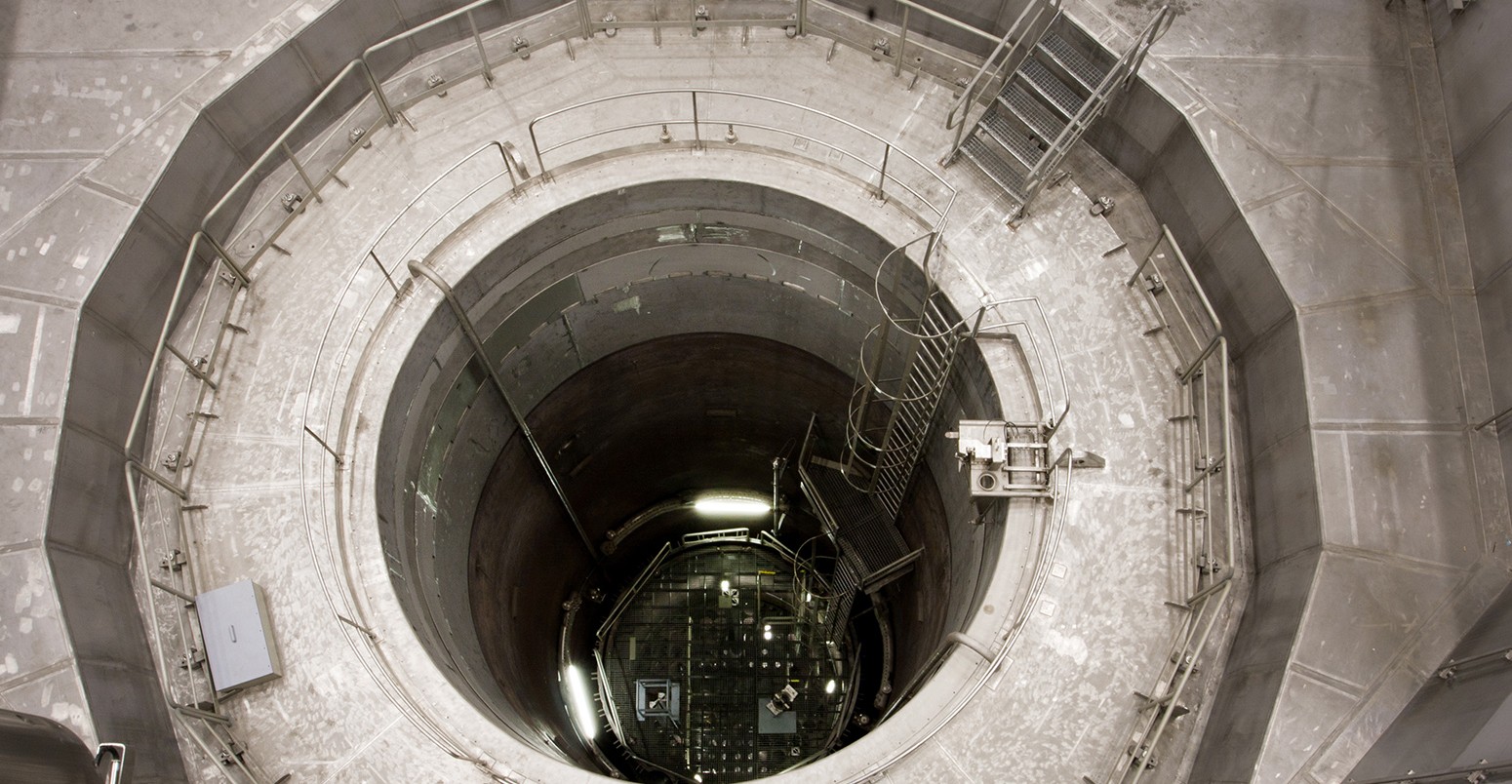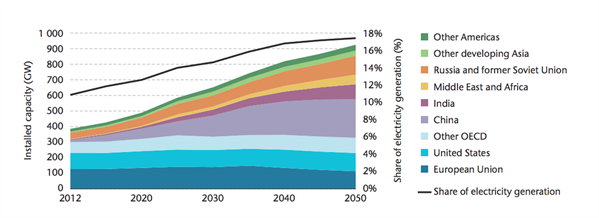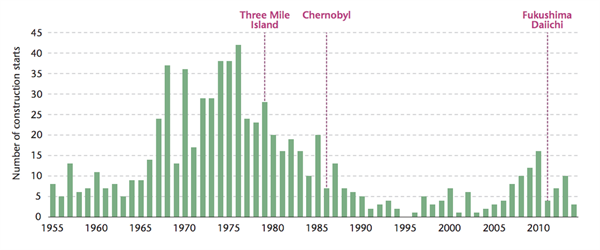
Nuclear power additions ‘need to quadruple’ to hit climate goals, IEA says
Simon Evans
01.31.15Simon Evans
31.01.2015 | 2:50pmThe world needs to quadruple the rate it is adding nuclear power capacity to the grid by the 2020s if it is to meet climate targets, according to a new report from thinktank the International Energy Agency (IEA).
The 2015 technology roadmap for nuclear energy, published jointly with the Nuclear Energy Agency, suggests nuclear power capacity needs to more than double by 2050 as part of cost-effective efforts to limit warming to two degrees.
Carbon Brief takes you through the roadmap’s findings and its recommendations for securing a nuclear contribution to avoiding dangerous climate change.
Contributing to climate goals
The IEA takes an all-of-the-above approach to cutting emissions. Its executive director Maria van der Hoeven says all low-carbon energy sources, including nuclear, will be required for the “energy revolution” we need to meet climate goals.
Nuclear-free scenarios that successfully combat climate change have been developed by other organisations, but they would require extremely ambitious efforts across areas including energy efficiency, land-use change and diets that not all experts believe to be achievable.
So to what extent might emissions be reduced by ramping up nuclear power, according to the IEA? Under its two degrees scenario, it thinks nuclear power capacity will need to more than double by 2050, to 930 gigawatts. That’s significantly less optimistic than the IEA’s 2010 nuclear roadmap, which put 2050 nuclear capacity at 1,200 gigawatts.
Most additional capacity will be in China (the lilac area in the chart below). Other growth areas include Russia, India and the UK, which has “one of the most ambitious newbuild programmes” in the OECD group of wealthier nations, according to the IEA. These plans include the high-profile Hinkley Point C plant in Somerset, among others.
The IEA says the global growth rate set out in its report is “formidable”. Achieving this growth rate would cost an estimated $4.4 trillion between 2011 and 2050, the IEA says.
Ambition has been scaled back by around 20 per cent because nuclear newbuild is estimated to be a fifth more expensive since the previous report. Competing power technologies such as solar and wind have also become much cheaper and the aftershocks of the Fukushima disaster in Japan have taken their toll, the IEA says.
Quadrupling current progress
The world is adding new nuclear capacity far more slowly than needed to match the IEA roadmap. There are several different ways to gauge progress, however, and some look better for nuclear than others.
In 2014, world nuclear capacity increased by five gigawatts, the IEA says. In order to meet the roadmap’s 2050 nuclear capacity, annual additions in the decade to 2020 should have been averaging 10 gigawatts per year, the IEA suggests.
Annual additions during the 2020s would need to exceed 20 gigawatts, more than four times the current rate, as the chart below shows. The mid-1980s saw nuclear expansion top this rate, suggesting this level of ambition is achievable.
Another way to look at things is the number of new nuclear projects starting each year. On this measure, things look even less positive, as the chart below shows. Just four new sites started construction during 2011, the year of the Fukushima disaster, down from 16 in 2010. Only three projects began in 2014.
The IEA takes a more optimistic view of recent progress, pointing out that there were 72 nuclear sites under construction at the beginning of 2014, the highest number for 25 years.
Nuclear support
Hitting the heights of its 2050 scenario won’t happen without some extra effort on the part of government, industry and others, the IEA says.
Governments can choose whether to support new nuclear or not, the IEA says. They could finance guarantees, as well as reviewing electricity market arrangements. The UK has done both, through its electricity market reforms and fixed-price contracts for nuclear power.
The nuclear industry needs to show it can deliver projects on time and within budget so that these financing costs can be reduced, the IEA says. It says new nuclear plants should cost around £3.8 billion per gigawatt in Europe. The UK’s Hinkley C plant is expected to cost almost that, partly because of the costs of borrowing money to finance the scheme.
Existing nuclear plants will also need to stay open for longer as part of the 2050 roadmap, which depends on further research and investment. The IEA sees plants operating for up to 60 years or more. Nuclear operator EDF recently announced a ten-year life extension at one of its Dungeness B plants, and it hopes to agree similar extensions at its other UK plants.
Small modular nuclear reactors (SMRs) could play a “niche” role in future, the IEA says. It points out that just three prototype modular reactors are under construction, that none are yet operating and that the economics of SMRs “have yet to be proven”. Former environment secretary Owen Paterson gave SMRs a starring role in his vision for the UK’s energy future in a speech last year.
Cutting emissions
If the IEA’s formidable ambition for nuclear power is achieved, it would make a major contribution to cutting emissions.
It could avoid 2.5 gigatonnes of carbon dioxide per year, the IEA says, against current annual global emissions of around 50 gigatonnes. While that’s a sizeable amount, it goes to show that nuclear can only be a small part of the solution to climate change.
Main image: View into the reactor pressure vessel of Zwentendorf Nuclear Power Plant.
-
Nuclear power additions 'need to quadruple' to hit climate goals, IEA says




